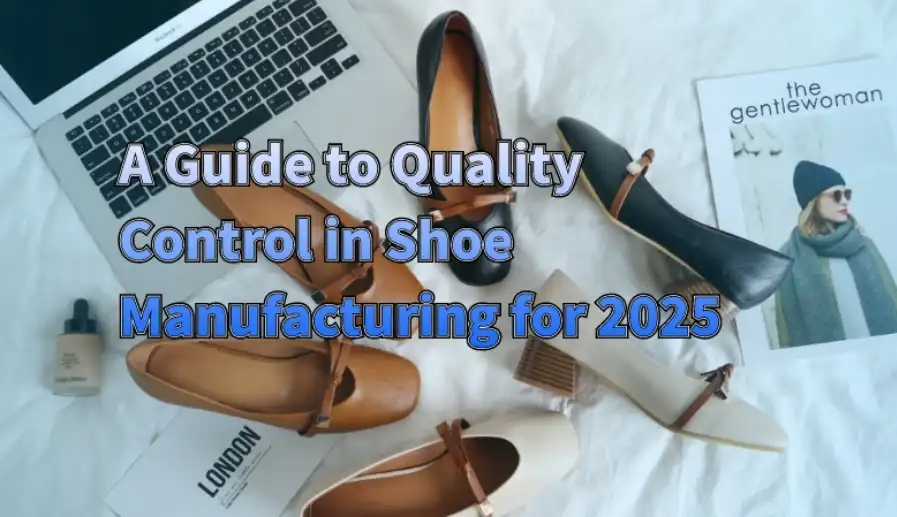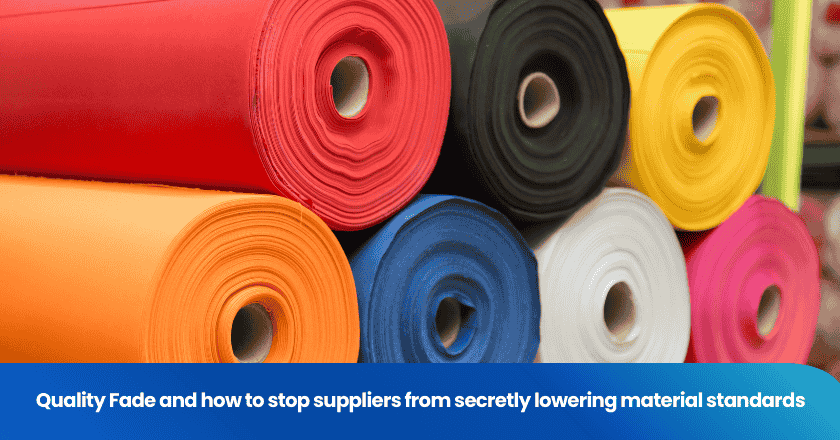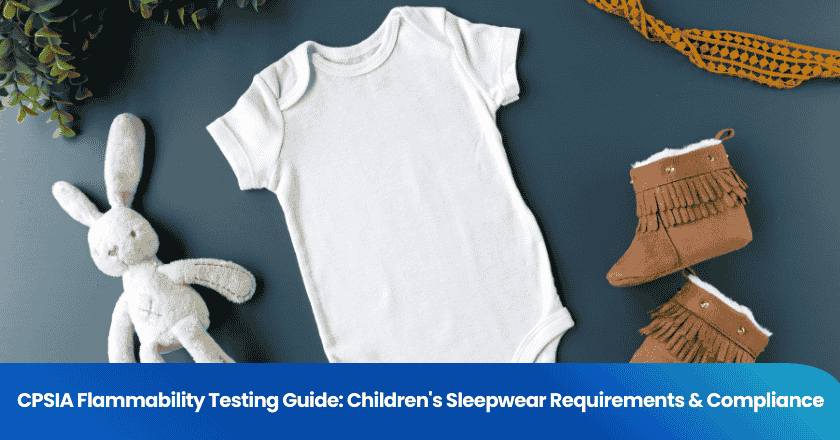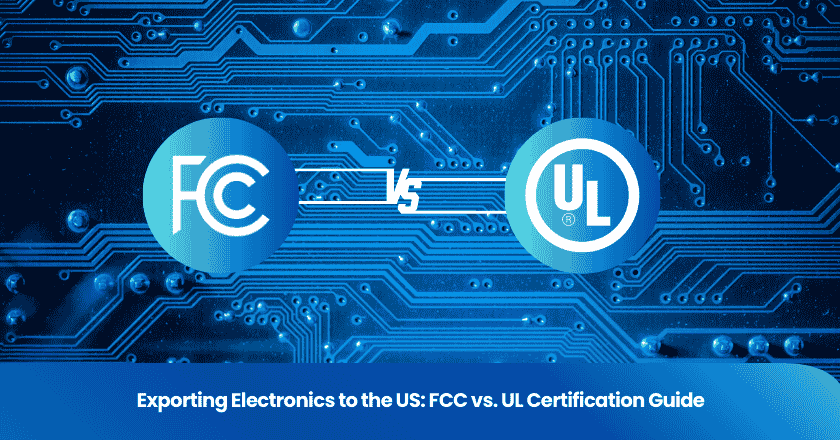
TradeAider: Redefining Inspection & QA in the Global Market
As a leading and reliable inspection and QA service provider, TradeAider is driven by a commitment to excellence and innovation. The company’s core strengths stem from the founder’s steadfast dedication and extensive expertise in global trade and manufacturing. Supported by a network of over 80,000 quality control specialists worldwide, TradeAider ensures thorough oversight across the entire production cycle. The TradeAider App enhances the company’s capabilities, offering seamless quality assurance for every service order placed by clients. TradeAider is also recognized as part of Amazon’s Service Provider Network (SPN) for quality control, aligning it with industry leaders.
Distinctive Advantages of TradeAider
TradeAider distinguishes itself from traditional inspection firms in several key ways:
•Beyond Cost Savings: While maintaining competitive pricing, TradeAider emphasizes efficiency and transparency over merely reducing costs, utilizing advanced digital tools to optimize its services.
• Real-Time Visibility: Clients benefit from the TradeAider Web App, which allows them to monitor the inspection process in real time, providing transparency and keeping them informed and in control.
• Quality Assurance: TradeAider takes additional steps to ensure clients receive top-quality products, exemplified by its Free Sticker-Attaching Service, which reflects its focus on detail and compliance.
• Trust and Security: TradeAider establishes trust with clients from the start through strong safeguards and a dependable “refund commitment,” offering reassurance that their orders are secure.
Ensuring Shoes Quality Control Meets High Standards
Ensuring shoes quality control meets high standards is essential for satisfying customers and building trust in your brand. When you prioritize footwear quality control, you can prevent defects, enhance durability, and deliver comfort, which leads to loyal customers.
Today, advancements in technology and a growing focus on sustainability are reshaping shoe manufacturing. Automated inspections and eco-friendly materials allow you to maintain shoes quality control while reducing environmental impact. As a manufacturer, adopting these innovations ensures your products stay competitive and align with modern consumer values.
Modern Challenges in Shoes Quality Control
Meeting Consumer Expectations for Durability and Comfort
Consumers expect shoes to last long and feel comfortable. As a manufacturer, you must ensure that every pair meets these expectations. Durability depends on the materials and construction methods used in shoe manufacturing. High-quality materials, such as leather or advanced synthetic fabrics, can withstand wear and tear. Comfort, on the other hand, relies on proper design and cushioning. Testing prototypes for fit and performance helps you identify potential issues early.
Tip: Regularly gather feedback from customers to understand their needs better. This can guide you in improving both durability and comfort.
Balancing Cost Efficiency with Quality Standards
Maintaining high standards while controlling costs is a constant challenge. Cutting corners to save money can lead to poor shoe quality, which damages your reputation. Instead, focus on optimizing production processes. For example, using automated systems can reduce errors and improve efficiency. Bulk purchasing of materials may also lower costs without compromising quality.
You should also train your workforce to follow strict quality control measures. Skilled workers can identify defects during production, ensuring only the best products reach the market.
Addressing Sustainability and Ethical Concerns
Sustainability has become a key focus in shoe manufacturing. Consumers now prefer eco-friendly products made from sustainable materials. You can meet this demand by using recycled or biodegradable components. Ethical concerns, such as fair labor practices, also play a role. Partnering with ethical suppliers ensures that your products align with modern values.
Note: Highlighting your commitment to sustainability can attract environmentally conscious customers and strengthen your brand image.
Managing Complex Global Supply Chains
Global supply chains in shoe manufacturing involve sourcing materials, coordinating production, and delivering products across multiple regions. Managing these complex networks requires careful planning and execution to ensure efficiency and quality.
You must first establish strong relationships with reliable suppliers. Vet each supplier to confirm they meet your quality standards and ethical guidelines. Regular audits can help you monitor their performance and address any issues promptly. Building trust with your suppliers ensures smoother operations and reduces risks.
Logistics play a critical role in global supply chains. Delays in shipping or customs can disrupt your production schedule. To avoid this, work with experienced logistics partners who understand international regulations. Using technology like real-time tracking systems allows you to monitor shipments and respond to delays quickly.
Communication is another key factor. Miscommunication between teams in different countries can lead to errors. You should implement clear protocols and use collaboration tools to keep everyone aligned. Regular updates and meetings help maintain transparency and ensure all stakeholders stay informed.
Maintaining consistent quality across multiple locations can be challenging. Standardize your quality control processes and provide training to all teams involved. This ensures that every product meets your expectations, regardless of where it is manufactured.
Tip: Use digital platforms to centralize supply chain management. These tools can help you track inventory, monitor supplier performance, and streamline communication.
By addressing these challenges proactively, you can create a resilient supply chain. This not only improves efficiency but also enhances your ability to deliver high-quality shoes to customers worldwide.
Key Processes in Shoe Manufacturing Quality Control
Material Selection and Testing
Material selection is the foundation of shoe manufacturing. The materials you choose directly impact the durability, comfort, and overall quality of your shoes. High-quality fabric, leather, and synthetic materials ensure your products meet customer expectations. Testing these materials before production begins is a critical step in quality control.
You should conduct various tests to evaluate material properties. For example, tensile strength tests measure how much force a material can withstand before breaking. Abrasion resistance tests determine how well the material resists wear and tear. Moisture absorption tests help you understand how the material reacts to sweat or water exposure. These tests ensure the materials can handle the demands of daily use.
Tip: Partner with reliable suppliers who provide consistent, high-quality materials. This reduces the risk of manufacturing process issues caused by substandard components.
Pre-Production Prototyping and Testing
Prototyping allows you to identify potential problems before full-scale production begins. During this phase, you create sample shoes to test their design, fit, and functionality. This step is essential for addressing manufacturing process issues early, saving time and resources.
You should focus on key aspects like sole attachment, stitching quality, and overall comfort. For instance, testing the sole's flexibility ensures it provides adequate support without compromising durability. Checking the stitching helps you confirm that the shoe can withstand regular use without falling apart. Fit tests involve having individuals wear the prototypes to assess comfort and performance.
Note: Document all findings during prototyping. Use this data to refine your designs and improve the final product.
In-Line Inspections During Production
In-line inspections are a vital part of shoe manufacturing. These inspections occur during the production process to catch defects early. By addressing issues as they arise, you can prevent costly mistakes and maintain consistent quality.
You should assign trained inspectors to monitor each stage of production. For example, they can check for uneven stitching, poorly attached soles, or material defects. Using standardized checklists ensures every aspect of the shoe meets your quality standards. Advanced tools like AI-powered inspection systems can also enhance accuracy and efficiency.
Tip: Regularly train your production team on quality inspection techniques. Skilled workers can identify and resolve problems quickly, ensuring high-quality shoes.
Post-Production Quality Evaluations
Post-production quality evaluations are the final step in ensuring your shoes meet the highest standards before reaching customers. This stage involves a thorough examination of finished products to identify any defects or inconsistencies that may have been missed during earlier inspections. By conducting a detailed final inspection, you can maintain your reputation for delivering high-quality footwear.
You should start by checking the overall appearance of the shoes. Look for issues such as uneven stitching, discoloration, or poorly attached soles. These visual inspections help you catch flaws that could affect the product's appeal. Next, test the functionality of the shoes. For example, flex the soles to ensure they provide the right balance of support and flexibility. Examine the interior for proper cushioning and comfort.
Durability testing is another critical aspect of post-production evaluations. Simulate real-world conditions to see how the shoes perform under stress. For instance, you can use machines to replicate walking or running movements. This helps you confirm that the shoes can withstand regular use without falling apart.
Documenting the results of these evaluations is essential. Keep detailed records of any defects found and the actions taken to address them. This data allows you to identify recurring issues and improve your production processes over time. By prioritizing post-production quality evaluations, you can ensure that every pair of shoes meets your customers' expectations.
Tip: Use a standardized checklist during evaluations to ensure consistency and thoroughness across all products.
Packaging and Shipping Inspections
Packaging and shipping inspections play a vital role in maintaining the quality of your shoes during transit. Even the most well-made products can suffer damage if they are not packaged and handled correctly. By implementing strict quality control measures at this stage, you can protect your shoes and deliver them to customers in perfect condition.
Start by inspecting the packaging materials. Ensure that boxes, wrapping, and padding provide adequate protection against impacts and environmental factors like moisture. Use durable materials that can withstand the rigors of transportation. Proper labeling is also crucial. Labels should include clear information about the product, such as size, color, and model, to prevent mix-ups during shipping.
Before shipping, verify that each package contains the correct items. Double-check the quantity and ensure that all shoes are free from defects. This step minimizes the risk of customer complaints and returns. Additionally, monitor the loading process to ensure that packages are handled with care. Overloading or improper stacking can lead to damage during transit.
Tracking systems are another valuable tool for shipping inspections. Use technology to monitor the location and condition of your shipments in real time. This allows you to address any issues promptly and keep your customers informed about delivery timelines.
Note: Partner with reliable logistics providers who prioritize careful handling and timely delivery. This ensures that your shoes reach their destination in excellent condition.
Advanced Technologies in Shoes Quality Control for 2025
AI-Powered Inspection Systems
Artificial intelligence (AI) is transforming shoe manufacturing by enhancing inspection processes. AI-powered systems can analyze shoes for defects with incredible speed and accuracy. These systems use advanced image recognition technology to detect issues like uneven stitching, material flaws, or improper sole attachment. Unlike human inspectors, AI systems do not tire or lose focus, ensuring consistent results throughout production.
You can integrate AI inspection tools into your production line to catch defects early. For example, cameras equipped with AI software can scan shoes as they move along the conveyor belt. The system flags any irregularities, allowing your team to address them immediately. This reduces waste and ensures that only high-quality products reach your customers.
AI systems also collect valuable data during inspections. By analyzing this data, you can identify recurring problems and improve your manufacturing processes. For instance, if the system frequently detects stitching issues, you can adjust your sewing machines or train your workers to achieve better results.
Tip: Start small by implementing AI inspection tools in one part of your production line. Gradually expand their use as you see improvements in quality control.
Automation in Manufacturing and Testing
Automation is revolutionizing shoe manufacturing by streamlining production and testing processes. Automated machines can handle repetitive tasks like cutting materials, assembling components, and applying adhesives. This reduces human error and speeds up production, allowing you to meet tight deadlines without compromising quality.
In testing, automation plays a crucial role in ensuring consistency. Machines can perform durability tests, such as flexing soles or applying pressure to materials, with precision. These tests simulate real-world conditions, helping you confirm that your shoes can withstand daily wear and tear. Automated testing also saves time, enabling you to evaluate more samples in less time.
You can use automation to improve efficiency while maintaining high standards. For example, robotic arms can assemble shoes with exact measurements, ensuring a perfect fit every time. Automated systems can also monitor production lines for issues like material shortages or equipment malfunctions. This allows you to address problems quickly and avoid delays.
Note: While automation reduces the need for manual labor, it is essential to train your team to operate and maintain these advanced machines. Skilled workers ensure that your automated systems run smoothly.
Blockchain for Supply Chain Transparency
Blockchain technology is gaining traction in shoe manufacturing as a tool for improving supply chain transparency. A blockchain is a digital ledger that records transactions in a secure and tamper-proof manner. By using blockchain, you can track every step of your supply chain, from sourcing materials to delivering finished products.
You can use blockchain to verify the origin of your materials. For instance, if you source leather from a specific supplier, the blockchain can confirm that it meets your quality and ethical standards. This ensures that your products align with consumer expectations for sustainability and fair practices.
Blockchain also enhances communication within your supply chain. All stakeholders, including suppliers, manufacturers, and logistics providers, can access real-time information about shipments and inventory. This reduces the risk of delays and ensures that everyone stays informed.
Tip: Partner with blockchain service providers to implement this technology in your supply chain. They can help you set up a system that meets your specific needs.
By adopting these advanced technologies, you can stay ahead in the competitive world of shoe manufacturing. AI, automation, and blockchain not only improve efficiency but also ensure that your products meet the highest quality standards.
Sustainable Materials and Eco-Friendly Processes
Sustainability has become a cornerstone of modern shoe manufacturing. As a manufacturer, adopting sustainable materials and eco-friendly processes not only helps the environment but also aligns your products with the values of today’s consumers. By making thoughtful choices, you can reduce waste, conserve resources, and create shoes that appeal to environmentally conscious buyers.
Choosing Sustainable Materials
The materials you use in shoe manufacturing play a significant role in determining your environmental impact. Traditional materials like leather often require resource-intensive production methods. Instead, you can explore sustainable alternatives that offer similar durability and quality. For example:
• Recycled Materials: Use recycled plastics or rubber to create soles and other components. These materials reduce waste and give discarded items a second life.
• Plant-Based Options: Consider materials like cork, hemp, or pineapple leather. These renewable resources are biodegradable and require fewer chemicals during production.
• Certified Sustainable Sources: Look for certifications like FSC (Forest Stewardship Council) for wood-based materials or GOTS (Global Organic Textile Standard) for fabrics. These certifications ensure that the materials meet strict environmental and ethical standards.
Tip: Partner with suppliers who specialize in sustainable materials. This ensures consistency in quality and helps you meet your sustainability goals.
Implementing Eco-Friendly Processes
Eco-friendly processes in shoe manufacturing focus on minimizing waste, reducing energy consumption, and lowering emissions. By optimizing your production methods, you can create a more sustainable operation. Here are some strategies to consider:
1. Waste Reduction: Implement systems to recycle scraps and offcuts from production. For instance, leftover fabric or rubber can be repurposed into new products.
2. Energy Efficiency: Upgrade to energy-efficient machinery and lighting in your factories. Renewable energy sources like solar or wind power can further reduce your carbon footprint.
3. Water Conservation: Use water-saving technologies in processes like dyeing or cleaning. Closed-loop systems can recycle water, minimizing waste.
4. Non-Toxic Adhesives and Dyes: Replace harmful chemicals with non-toxic alternatives. This protects both the environment and the health of your workers.
Benefits of Sustainability in Shoe Manufacturing
Adopting sustainable practices offers more than just environmental benefits. It also enhances your brand image and builds trust with your customers. Consumers today are more likely to support companies that prioritize sustainability. By showcasing your commitment to eco-friendly practices, you can differentiate your products in a competitive market.
Additionally, sustainable materials and processes often lead to cost savings in the long run. For example, energy-efficient machinery reduces utility bills, while recycling programs lower material costs. These savings can improve your bottom line while supporting your environmental goals.
Note: Sustainability is not just a trend. It is a long-term commitment that benefits both your business and the planet.
By integrating sustainable materials and eco-friendly processes into your shoe manufacturing operations, you can create high-quality products that meet the demands of modern consumers. These efforts not only contribute to a healthier planet but also position your brand as a leader in responsible manufacturing.
Collaborative Approaches to Quality Control
Strengthening Supplier Relationships
Building strong relationships with your suppliers is essential for maintaining consistent quality control. Reliable suppliers ensure that the materials they provide meet your standards, reducing the risk of defects during production. To achieve this, you should communicate your expectations clearly and establish regular quality checks. For example, you can request samples from suppliers before committing to bulk orders. This allows you to verify the quality of materials and address any concerns early.
Collaboration with suppliers also fosters trust. When you treat them as partners rather than just vendors, they are more likely to prioritize your needs. Regular meetings and feedback sessions can help you align goals and improve processes. By working closely with suppliers, you can create a seamless supply chain that supports your quality objectives.
Leveraging Customer Feedback
Customer feedback is a valuable resource for improving your products. Listening to your customers helps you identify areas where your shoes excel and where they fall short. For instance, if customers frequently mention issues with durability, you can focus on enhancing material selection or construction techniques.
You can collect feedback through surveys, reviews, or social media interactions. Analyze this data to spot trends and make informed decisions. Sharing these insights with your production team ensures that everyone works toward the same goal—delivering high-quality shoes that meet customer expectations. By acting on feedback, you demonstrate your commitment to continuous improvement and customer satisfaction.
Joint Efforts for Sustainability and Quality
Sustainability and quality go hand in hand in modern shoe manufacturing. Collaborating with suppliers, designers, and production teams allows you to integrate eco-friendly practices without compromising product quality. For example, you can work with suppliers to source sustainable materials or develop processes that minimize waste.
Joint efforts also extend to industry partnerships. By participating in sustainability initiatives or certifications, you can showcase your commitment to responsible manufacturing. These collaborations not only enhance your brand image but also contribute to a healthier planet. When everyone in the supply chain works together, achieving both sustainability and quality becomes more attainable.
Examples of Effective Quality Control in Shoe Manufacturing
AI-Driven Quality Assurance in Production
AI technology has revolutionized quality control in shoe manufacturing. You can use AI-powered systems to inspect shoes during production. These systems analyze images of shoes to detect defects like uneven stitching or material flaws. AI tools work faster and more accurately than human inspectors. This ensures that every shoe meets your standards before leaving the factory.
AI also helps you identify patterns in production issues. For example, if stitching problems occur frequently, the system can alert you to adjust your sewing machines. This proactive approach reduces waste and improves efficiency. By integrating AI into your production line, you can maintain consistent quality while saving time and resources.
Tip: Start with a small-scale AI implementation. Expand its use as you see improvements in your processes.
Case Study on Sustainable Shoe Manufacturing
Sustainability and quality can go hand in hand. One example is a manufacturer that switched to recycled materials for their soles. They used advanced testing methods to ensure the recycled materials performed as well as traditional ones. The company also adopted energy-efficient machinery to reduce emissions during production.
This approach not only improved their environmental impact but also enhanced their brand reputation. Customers appreciated the effort to create eco-friendly products without compromising quality. This case shows how sustainable practices can align with customer expectations and business goals.
Supplier Collaboration for Improved Quality
Strong supplier relationships are key to maintaining high standards. You should work closely with your suppliers to ensure they provide materials that meet your requirements. Regular audits and open communication help you address issues before they affect production.
Collaborating with suppliers also fosters innovation. For instance, you can partner with them to develop new materials or processes that improve durability and comfort. By treating suppliers as partners, you create a reliable supply chain that supports your quality objectives.
Robust quality control remains the backbone of shoe manufacturing. It ensures that every product meets customer expectations for durability, comfort, and sustainability. As a manufacturer, you must embrace innovation to stay competitive. Advanced technologies like AI and automation can streamline processes and improve efficiency.
Adapting to future trends requires a proactive approach. Focus on collaboration with suppliers and teams to maintain high standards. Prioritize sustainability by integrating eco-friendly materials and processes into your operations. These efforts not only protect the environment but also strengthen your reputation in the market.
Tip: Continuous improvement in quality control helps you deliver exceptional products while meeting evolving consumer demands.
Grow your business with TradeAider Service
Click the button below to directly enter the TradeAider Service System. The simple steps from booking and payment to receiving reports are easy to operate.




